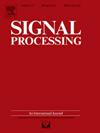LSCANet: Differential features guided long–short cross attention network for infrared and visible image fusion
IF 3.4
2区 工程技术
Q2 ENGINEERING, ELECTRICAL & ELECTRONIC
引用次数: 0
Abstract
Infrared and visible image fusion can generate images that not only highlight prominent targets, but also contain rich details and texture information. However, directly fusing the features of infrared and visible images can diminish the correlation information between source images. To address this, we propose a differential features guided long–short cross attention network for infrared and visible image fusion (LSCANet). Specifically, a differential feature cross attention network (DCAN) is designed to achieve cross modal multi-scale interaction of differential features in the feature extraction process. Cross modal feature interaction before infrared and visible features fusion can enhance deep feature relationships between cross modal features, thereby preserving more correlation information between source images. Besides, a long–short differential feature attention network (LSDAN) is proposed to achieve the integration of multi-scale cross-modal differential features, which can preserve details and texture information while reducing the artifacts and noise introduced during the integration process. Moreover, the loss function is introduced to impel the network retain more details and texture information while preserving thermal radiation information. Ablation experiments were conducted to validate the effectiveness of LSCANet. Extensive qualitative and quantitative experiments conducted on cross dataset benchmarks have demonstrated that LSCANet outperforms eight state-of-the-art methods. The source code is available at https://github.com/Pinot-30/LSCANet/tree/main.
求助全文
约1分钟内获得全文
求助全文
来源期刊

Signal Processing
工程技术-工程:电子与电气
CiteScore
9.20
自引率
9.10%
发文量
309
审稿时长
41 days
期刊介绍:
Signal Processing incorporates all aspects of the theory and practice of signal processing. It features original research work, tutorial and review articles, and accounts of practical developments. It is intended for a rapid dissemination of knowledge and experience to engineers and scientists working in the research, development or practical application of signal processing.
Subject areas covered by the journal include: Signal Theory; Stochastic Processes; Detection and Estimation; Spectral Analysis; Filtering; Signal Processing Systems; Software Developments; Image Processing; Pattern Recognition; Optical Signal Processing; Digital Signal Processing; Multi-dimensional Signal Processing; Communication Signal Processing; Biomedical Signal Processing; Geophysical and Astrophysical Signal Processing; Earth Resources Signal Processing; Acoustic and Vibration Signal Processing; Data Processing; Remote Sensing; Signal Processing Technology; Radar Signal Processing; Sonar Signal Processing; Industrial Applications; New Applications.
 求助内容:
求助内容: 应助结果提醒方式:
应助结果提醒方式:


